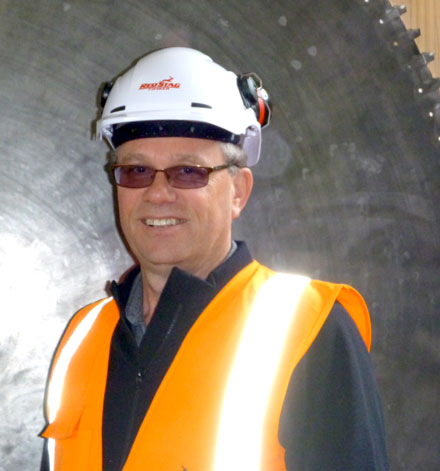
Marty Verry
The world’s most advanced sawmill and the first “super-mill” in the Southern Hemisphere is to be opened by Prime Minister Bill English in Rotorua. Source: The New Zealand Herald
A “super-mill” is a sawmill that processes more than one million tonnes of logs per year.
There are a number in North America and Europe, but the Red Stag Timber mill is the first of this scale in this hemisphere.
Having grown from the ashes of the Central North Island Forest Partnership receivership more than a decade ago, the company has quietly been re-investing and building capacity.
Initially bought in 2003 by Phil and Marty Verry, the company has remained in private ownership under directors Marty Verry and Louise Dinmore, and managed by general manager Tim Rigter.
With its structural timber market share topping out at about 25%, Red Stag made the decision in 2014 to commit to a new sawmilling line and upgrade program, valued in excess of NZ$100 million.
“We could see the current construction boom coming back in 2012,” said Red Stag Group chief executive Marty Verry.
“The bottleneck was the sawmill line. We were tapped out on the two lines we used then, so set about planning for a new line.”
That planning resulted in selection of a state-of-the-art line from North American manufacturer, USNR.
“The timing was fortunate, as the industry got short of timber for a month or two last year, but with the new capacity the industry is in balance.
“We will be bringing on sufficient timber volume in the next year or two to meet the market demand. It’s going to become very competitive as the demand slopes off in the medium term.”
The number of sawmills in New Zealand decreased from 101 in 2003 to 53 in 2016, and are forecast to decrease to 39 in the next five years. The rationalisation is an international trend driven by automation, economies of scale and unavailability of logs in some regions.
“A major reason for the new technology was also the desire to produce higher quality timber,” Mr Verry said.
“The scanning and optimising technology allows us to cut with the grain of the timber, and eliminate stresses in the timber. This results in very straight timber.”
That’s important as the markets move more towards prefabrication and off-site construction.
The building was constructed by Hawkins in 2015 and the new plant was installed during 2016 and has recently passed commissioning tests and is fully operational, cutting at a rate of 550,000cu m of timber annually.
“We have had excellent support from our supply chain partners to underpin this project. The large timber investment management companies, particularly Timberlands and Hancock Natural Resources, were key enablers by providing assurance of log supply.
“We commend and appreciate their recognition of the importance of a strong domestic sawmilling sector.
“The support from our key customer groups, including PlaceMakers, ITM, Mitre10, and their desire to stock higher quality timber also underpinned the investment decision.
“But what really gave us confidence in embarking on what will prove to be one of the milestone projects in the forestry industry was the track record our staff had generated in delivering successful projects.
“In the board’s view, they had earned the right to complete what for most will be a career-defining project, and so we backed their teams, led by sawmill manager Steve Roberts and project manager Mike Carlton.”





